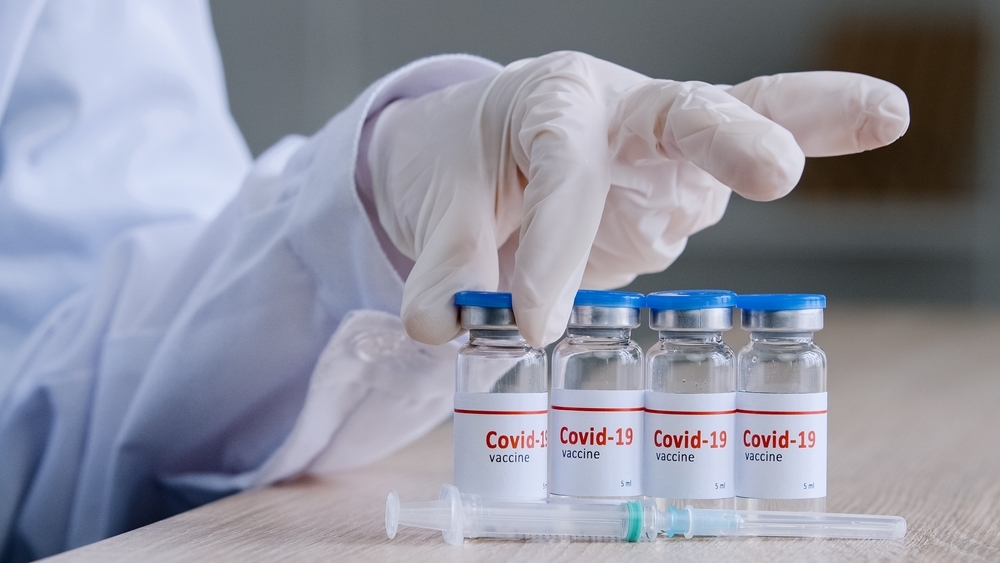The changing healthcare landscape is elevating pharmacists

Pharmacy
By Malini Ghoshal RPh, MS
The COVID-19 pandemic profoundly altered how millions of Americans obtain healthcare and has elevated pharmacists to new roles in their communities. The convergence of increased pandemic-related healthcare demands, together with stressed health systems, has led to serious care gaps exposing systemic weaknesses with care delivery, according to findings published in the International Journal of Health Services. This has allowed pharmacists to step up with an expanded offering of clinical care services at a time of increased demand for patient health services.
The sudden outbreak of the pandemic challenged community-level primary care providers and strained health system resources. But it has also presented novel opportunities for pharmacists to take a leading role in expanding their preventive care and disease management services.
Initiatives elevating pharmacists' roles in the community
Community-level resource constraints have highlighted the strong clinical care capabilities of pharmacists. This has been highlighted by their broadened range of service offerings in recent years. The pandemic has continued elevating pharmacists to invaluable patient care partners in the healthcare continuum.
Nationally, pharmacies have developed various novel approaches to serve as touchpoints with patients and clinical health partners to increase trust, build confidence and grow engagement. Community-based clinical health providers are increasingly relying on pharmacists to aid clinical decision support with complex disease management.
Further, pharmacists no longer serve as just a bridge between patients and clinicians. Rather, they are now actively engaged in disease mitigation and health promotion measures directly with the patient. They also have autonomous decision-making abilities to positively affect health outcomes in many communities.
Examples of expanded clinical services include:
- Wellness solutions such as immunizations for children and older adults.
- Telepharmacy consultations for condition management.
- Diagnostic testing (Covid testing, blood pressure, cholesterol and blood sugar).
- Prescribing authority for certain medications including nirmatrelvir/ritonavir (Paxlovid) and naloxone in approved states.
- Monoclonal antibody infusions.
- Substance misuse prevention and addiction treatment related services.
These greater services have tangibly demonstrated to patients, clinicians and payers that pharmacists can deliver clinical services resulting in improved health outcomes.
The need to connect pharmacy with community
The pandemic has put a spotlight on healthcare disparities across many racial and ethnic groups and underserved populations, according to a study published in Otolaryngology–Head and Neck Surgery. This is largely due to higher rates of chronic illness and disease burden in these groups, resulting from social determinants of health influences. Research published in Travel Medicine and Infectious Disease also indicates these factors contribute to higher rates of hospitalization and deaths for some racial and ethnic groups (Black, Hispanic, Asian American Pacific Islander) due to COVID-19.
Individuals with chronic conditions such as cardiovascular disease, diabetes and hypertension have the highest risk for COVID-19 related complications. Data published in the journal Preventing Chronic Disease also indicates chronic disease accounts for an estimated $3.8 trillion in yearly healthcare costs in the U.S., and the pandemic is projected to escalate long-term costs stemming from delayed or postponed care.
The confluence of COVID-19 and worsening chronic disease burdens have provided pharmacists opportunities to address care gaps by utilizing innovative technology-based solutions like the Outcomes™ ecosystem to provide medication counseling. Pharmacists are ensuring patients stay on track to meet treatment goals. Elevating pharmacists to be at the forefront of disease management stewardship programs can efficiently improve healthcare delivery.
Pharmacists have been particularly impactful in offering vital clinical services in underserved areas with severely limited healthcare providers and health system availability. Patients also see pharmacists more often than primary care physicians because they are readily accessible. This has helped elevate pharmacists to more centered roles by connecting pharmacies with their communities in providing critical direct clinical care and preventive wellness services.
Utilizing technology to advance patient care in the era of COVID-19 and beyond
The advent of greater clinical care responsibilities entrusted to community pharmacists has accelerated the need for technological solutions. Pharmacies that utilize technology-based workforce solutions are able to expand their scope of practice while minimizing workflow disruptions.
The Federal government partnered with 21 national retail pharmacy partners to broaden COVID-19 vaccine access. According to the CDC, as of July 2022, more than 258 million doses of COVID-19 vaccine have been administered from over 41,000 pharmacy locations nationally.
This would not have been possible without technological support to ease the increased clinical services pharmacists now routinely provide. For example, with the help of Outcomes® tools like MyScheduling, patients and pharmacy partners can book immunization appointments, freeing up valuable staff time to focus on patients.
Pharmacists are also utilizing decision support tools to improve quality metrics in disease management. In fact, 60,000 Outcomes participating pharmacies have conducted over 7 million MTM educational interventions to positively impact patient health outcomes.
In addition, communication solutions allow pharmacists to optimize time management, improve their patient relationships and positively impact interactions. Outcomes offers telepharmacy, a technology that enables remote prescription verification and patient counseling, so they can continue to connect with their patients while also optimizing their in-house workflow.
Outcomes programs lower costs and improve health outcomes through the use of predictive algorithms.
It provides opportunities to:
- Pre-book appointments for immunizations, vaccines and preventive care.
- Communicate directly with patients to increase medication adherence goals.
- Manage workload distribution to mitigate stress stemming from resource limitations.
All these technological advancements have yielded discernible benefits such as improved long-term health outcomes and lower overall healthcare costs. As COVID-19 continues to impact public health and resource availability, pharmacists are proving they are up to the challenge of delivering exceptional patient care.
The role of pharmacists continues to evolve as direct-to-patient care providers. Providing a greater range of preventive health, diagnostics, and condition management services, while investing in technology solutions to enhance patient interactions, streamline available resources and increase revenue opportunities.
Learn more about how Outcomes can help you expand your clinical service offerings while allowing pharmacists to deliver outstanding patient care.



